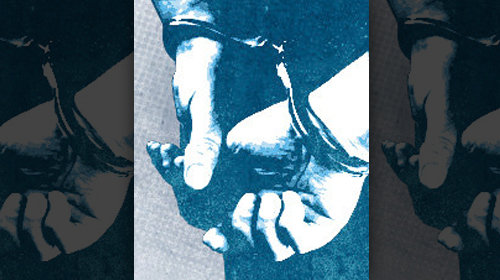
Today, the U.S. has the highest incarceration rate of any country in the world. With over 2.3 million men and women living behind bars, our imprisonment rate is the highest itÔÇÖs ever been in U.S. history. And yet, our criminal justice system has failed on every count: public safety, fairness and cost-effectiveness. Across the country, the criminal justice reform conversation is heating up. Each week, we feature our some of the most exciting and relevant news in overincarceration discourse that weÔÇÖve spotted from the previous week. Check back weekly for our top picks.
The American Bar Association and a Justice Department unit launched a new website that allows users to search federal and state laws that hinder people with criminal records from being able to do basic things ÔÇö like finding work and obtaining housing ÔÇö to be able to reenter society successfully. Collectively, these impediments to reentry are called the ÔÇ£collateral consequencesÔÇØ of a criminal conviction. To learn more, visit the , read an on collateral consequences, and read a of collateral consequences that set one person back for long after his minor conviction.
The rapid growth of federal prison populations has caused an overcrowding problem serious enough to get the attention of the Government Accountability Office. According to the GAOÔÇÖs new report, federal prison officials reported increased use of double and triple bunking, waiting lists for education and drug treatment programs, limited meaningful work opportunities, and increased inmate-to-staff ratios. The report, titled ÔÇ£Growing Inmate Crowding Negatively Affects Inmates, Staff, and InfrastructureÔÇØ can be found at the link above, and a summary can be found .
JPIÔÇÖs new report finds that the average bail amount for people who are detained has more than doubled since 1992, despite evidence that higher bail amounts are not related to greater public safety, and that people unable to afford bail are often less dangerous than those who can make bail, and often are more likely to appear in court. The report is the first in a three-part series of analytical reports on bail, for-profit bail bonding, and the community impacts of bail that are slated for release throughout the month of September.
A survey of likely voters by the California Business Roundtable found that 81 percent of respondents responded either ÔÇ£Likely YesÔÇØ, ÔÇ£Somewhat YesÔÇØ, or ÔÇ£Strongly YesÔÇØ. The initiative, Proposition 36, would revise CaliforniaÔÇÖs three strikes law to impose a life sentence only when a new felony conviction is serious or violent. You can learn more about Prop 36 . The same poll found respondents not in favor of Proposition 34, the death penalty repeal initiative, by a 50-42 margin.
West Virginia prison and jail overcrowding persists despite numerous studies laying out the stateÔÇÖs options to reduce its prison population. But the Council of State Governments is hoping that their research will have an impact. CSG is currently collaborating with a working group of West Virginia officials to study state corrections data and generate recommendations that could become part of legislation during the upcoming session. You can read CSGÔÇÖs initial report to West Virginia .
Learn more about overincarceration: Sign up for breaking news alerts, , and .
